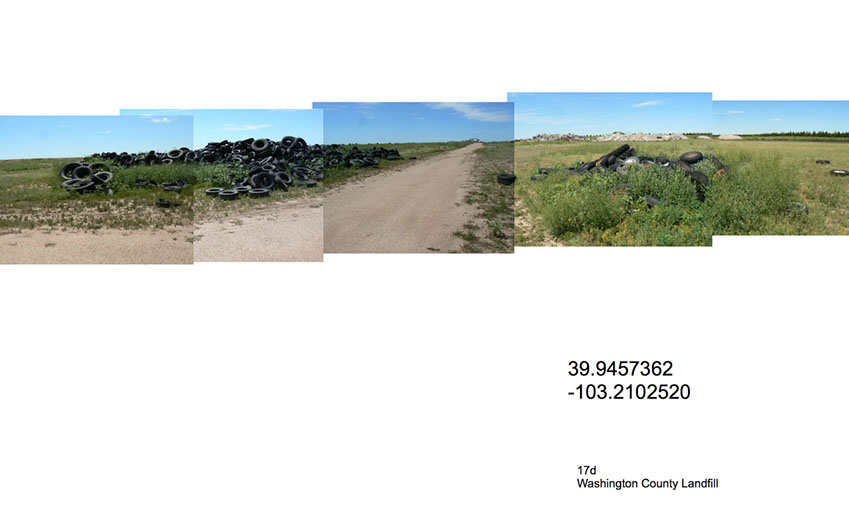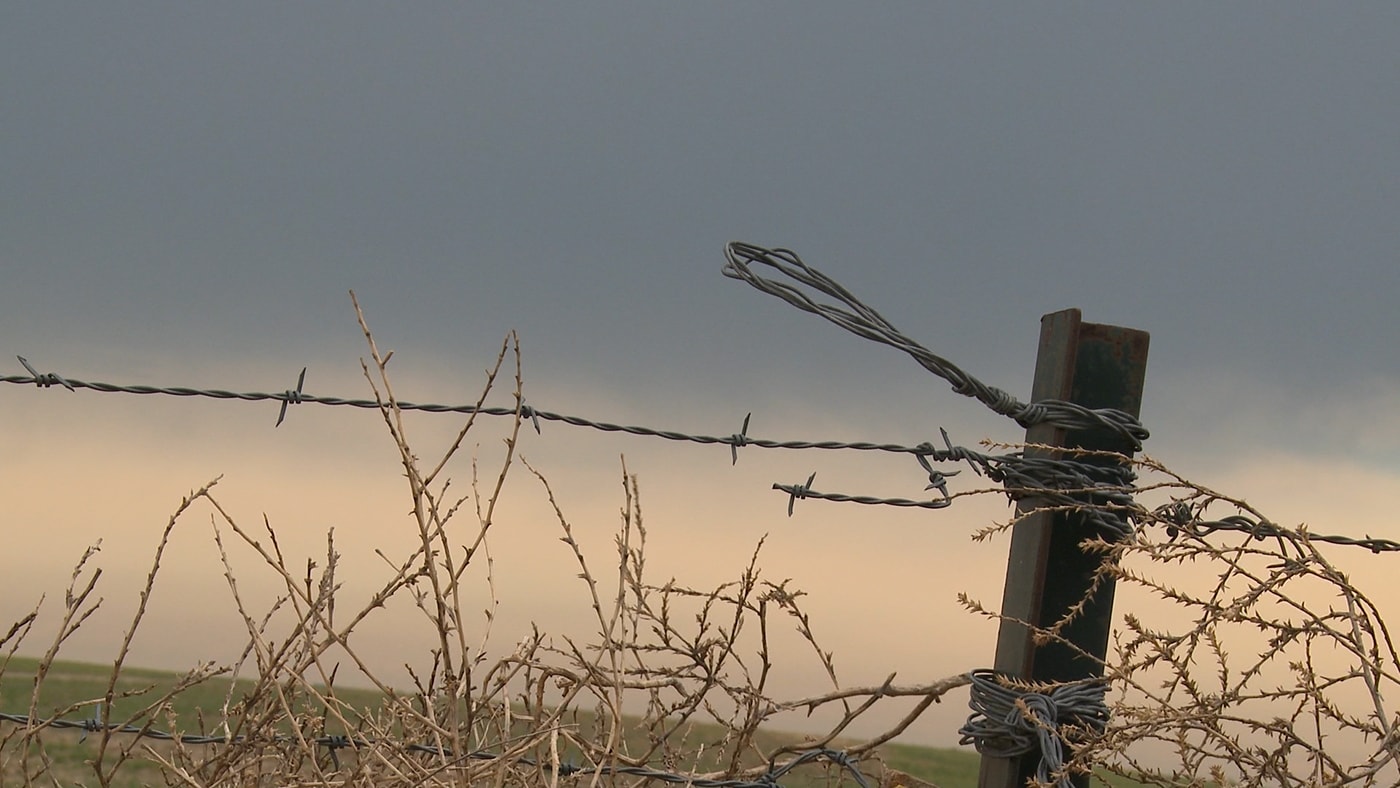Action on the Plains. Visiting Contributors Program. Cooperative location-based residencies. Ongoing.
Action on the Plains was an annual collaborative program developed by M12 to support experiential art-making activities on the Eastern Colorado High Plains. Guest artists were invited to work with M12 on conceptualizing and creating new work around both Byers and Last Chance, Colorado. Action on the Plains was a team-based approach to creating new projects and involved community groups, area business professionals, and regional citizens. M12 selected creative practitioners whose work was actively opening an international field of art practices in rural environments. Action on the Plains projects add to an ever-expanding regional culture identity and are specifically designed to resonate with life on the High Plains of Eastern Colorado.

Wide Views with Wes Janz
The flow of people from country to city is a well-documented phenomenon. A complementary case – that many people choose to stay in their village or on their farm or ranch – is less appreciated. The panoramas exhibited at the Feed Store set out some of the everyday places and practices of the people who remain in Washington County. Wes Janz is an architecture professor working in the area of social and environmental justice. His ongoing collaboration with the M12 Collective provides two wide views: the first, insights into the landscapes, cultures, and people of the American High Plains; the second, rethinking his early life growing up on and leaving an eighty-acre farm in Central Wisconsin.

Raptors Roost with Lynne Hull
In the summer of 2013, Lynne Hull built sculptures in Last Chance, Colorado, including one of her well-known Raptors Roosts. Hull describes her sculptures and installations as providing shelter, food, water, or space for wildlife, as eco-atonement for their loss of habitat to human encroachment. Hull designed and installed a series of bat habitats at a land-site at the corner of highway 36 and 71 as well. This site was home to a nationally acclaimed birding site but just the summer before was almost completely destroyed by wildfire. Hull collaborated with the Rocky Mountain Bird Observatory, the University of Colorado, and the Last Chance Lion’s Club and M12 to build a space for wildlife, specifically bats, to once again inhabit.

Farmers and Ranchers with Wapke Feenstra
Farmers and Ranchers is a portrait of young people in transition. Teenagers from the United States and the Netherlands were asked to consider their futures in farming and ranching. Both watch as their landscapes undergo tremendous change: sea dikes are rising in Fryslân, while the Plains of Colorado suffer drought. A two-year documentary project, Farmers and Ranchers depicts how these changing landscapes are impacting the next generation of farmers and ranchers.

The Pasture of the Fourth Horseman by Matt Slaby
In 1959 the US Air Force began construction of six Titan I nuclear missile silo-bases on the prairie east of Denver. The silos were, as their namesake implied, titanic. Each base housed three missiles capable of striking Moscow with a yield of 218 times the blast that rocked Hiroshima in a little over thirty minutes. The silos were all serviced by an enormous complex of interconnected tunnels and infrastructure that allowed the missile crews to remain completely self-contained and well-protected from attack six stories below the surface of the earth. These silos, along with a sister Atlas missile program, were the first of their kind in the US and marked an uptick in the nuclear proliferation that defined the Cold War.
By 1965, less than six years after the start of their construction, these silos were emptied of their missiles and permanently decommissioned to make way for faster, more consistent, and more cost-effective missile systems. The hulking remnants of the Titan silos were sold privately to new landowners and were, ultimately, left in various states of salvage and decay.
To a modern viewer, untethered from the context of the Cold War and unfamiliar with the enormity of what lies under the soil, these silos are easy to overlook. There are just a few concrete structures above ground and a perimeter fence around each of the sites. They give very little indication of the dark purpose of their original design and tell even less about the scope and macabre marvel of the engineering feat under the soil.
By revisiting these abandoned Cold War sites and the men who built and worked in them, photographer Matt Slaby endeavors to provide social and historical context to the silos of rural eastern Colorado. Slaby’s work offers insight not only into what they were when they were fully functional, but also what they stand for in the archetypal language of the American psyche.

Star Route 1 with Mary Rothlisberger
Star Route 1 is a project created with Mary Rothlisberger that documents post offices throughout the Plains of Colorado with an emphasis on Washington County, CO. Rothlisberger’s research includes photographs, interviews, and historical accounts of regional post offices. As the last vestige of a communications commons, the social relationships formed within and through the post office are unique and complex. Intimacy and institution collide in the rural post office, which often serves as the social fulcrum (both publicly and privately) in remote communities. Star Route 1 is the first in a series of multimedia presentations from Rothlisberger’s participation as a visiting contributor through our Action on the Plains initiative.
Mary Rothlisberger is a citizen artist with an emphasis on cultural empowerment in rural and under-recognized communities. Her work is conversational and research-based, in response to the social, built, and natural environments we situate ourselves within.

Tumbleweed, a film by Kim Shively
Over the last century, the tumbleweed has embodied the roaming frontier spirit of the American West, it has been romanticized and many times objectified, reinforcing our pastoral dreams of the country. But today an ecological war has ensued in the high plains region, a battle fought by farmers against a brazen and bold plant staking claim in fields across Colorado. Tumbleweed, a four part documentary film, explores the past and current day history of the Russian Thistle and Kochia plant—both, commonly known as tumbleweeds in their dried out form. These perennials are extremely adaptable and thrive in all weather conditions, making them indestructible and capable of choking out food systems across the United States. Filmed near Last Chance, Cheyenne Wells, and Burlington, Colorado, the series divides into four seasons exposing the tumbleweed life cycle in these rural locales. Shively, known for the idyllic and reticent qualities of her films looks through a bucolic lens, giving us a story of one dried up plant pushing its way through the rural landscape.

Turecek Murals with Jetsonorama
Inspired by the community approach to graffiti culture, artist Jetsonorama collaborated with the Turecek Family of Byers, Colorado in 2011 to co-produce a series of wheatpastings installed on two Quonsets and one 50-foot grain bin on the Turecek farm. The imagery represents the history of the Turecek family, who have lived on-site since the 1930s and to this day are successful wheat farmers. Well known for installing large-scale portraits of community members on remote and isolated abandoned buildings, Jetsonorama’s work translates perfectly to the rural landscape near Byers.
